The commonly used name for magnesium sulfate, Epsom salt, is a compound that has immense uses in agriculture and gardening. This article seeks to look at the possible impacts of Epsom salt on plants and address common misconceptions and issues raised about its use. The chemical make-up of it, as well as how it interacts with soil and plant biochemistry, shall be analyzed to enable us to gain a deep insight into how it affects different plants and whether it is beneficial or harmful to them. In carrying out this study, we rely on scientific findings as well as our own experiences in cultivation practice so that the readers fully comprehend Epsom salt’s role in horticulture.
Understanding Epsom Salt Composition and Plant Interaction
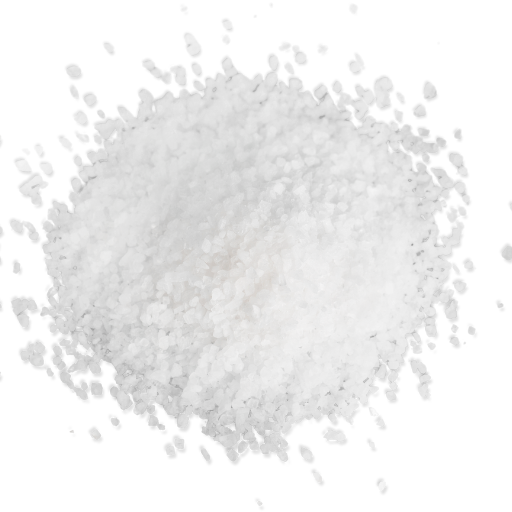
Epsom salt has magnesium and sulfate ions, which are crucial nutrients for vital plant functions. Magnesium is the central atom in chlorophyll molecules that help in photosynthesis and activates several enzymes found in plants. Conversely, sulfate is important for synthesis of some amino acids and proteins. Epsom salt when put into soil dissolves releasing these ions which can be absorbed by plants through their roots. However, the effect of Epsom salts on plants depends on the context it is used under. It may be required if magnesium is deficient but excessive application can disrupt the nutrient balance in the soil thereby affecting plant health adversely. Therefore, it’s important to know your soil and plant needs before you add Epsom salts to your gardening schedule.
Chemical Composition Of Epsom Salt (Magnesium Sulfate)
Magnesium sulfate, scientifically known as magnesium sulphate (MgSO₄) consists of two main types of ions: magnesium (Mg²⁺) and sulfate (SO₄²⁻). The molecular weight of magnesium sulfate stands at 120.366 g/mol. Additionally, this compound contains seven molecules of water when it forms its heptahydrate form(MgSO₄·7H₂O), hence increasing its molecular weight to 246.47 g/mol.This form has particular relevance in horticulture because its solubility in water is very high, enhancing rapid availability for plant absorption.
- Magnesium Content: There are approximately 9.8% magnesium by weight contained in Epsom salt.
- Sulfur Content: Approximately 13% sulfur by weight comes from using sulfate.
- pH Level: Dissolved in water, Epsom salt creates a neutral or slightly alkaline solution with a pH range usually between 6.0-7.5.
- Solubility: At 20°C,Epsom salt dissolves quickly in water at a rate of 710 g/L, thereby facilitating rapid plant nutrient uptake.
These parameters show the importance of precision application. Overuse may result in an imbalance of other essential nutrients such as calcium and potassium hence leading to deficiencies which hinder growth of plants. Therefore, soil tests to identify deficiencies and targeted supplementation are recommended for maximum beneficial effects from use of Epsom salts.
Mechanism For Plants Absorption Of Epsom Salt
Plants primarily absorb magnesium sulfate through their roots. When dissolved in water, Epsom salt dissociates into magnesium (Mg²⁺) and sulfate (SO₄²⁻) ions. These ions move through the soil solution into the roots of plants either by passive diffusion or active transport methods. Passive diffusion simply involves ions moving across root cell membranes from areas with higher concentration to lower concentration. Active transportation requires energy like ATP to move ions against the concentration gradient. Upon entering root cells, magnesium is used for the synthesis of chlorophyll while sulfate is necessary for making some amino acids and enzymes that are significant in overall metabolism and growth functions of a plant respectively.Alternatively,Epsom salts can be sprayed on leaves so that correction of magnesium and sulfur deficiencies can take place readily within a short time span via direct absorption into tissues on leaf surfaces
Historical Background and Fallacies
The employment of Epsom salt in farming goes back for centuries, it gained much popularity in the 17th century when it was found in the mineral waters of Epsom, England. Early adopters sang its praises without any firm grasp of its chemical properties. But modern scientific analysis has demystified some early misconceptions. An example of a common misconception is the belief that Epsom salt is a panacea for all kinds of plant diseases. However, while it provides magnesium and sulfur to plants, it should not replace balanced fertilization programs that address specific soil and plant requirements. Another false impression is that more frequent applications are better. Excessive use can cause toxicities and distort nutrient balances within soils. Therefore, knowledge about precise needs of the plant and soil condition through testing is vital for proper application.
Potential Risks and Side Effects of Epsom Salt on Plants
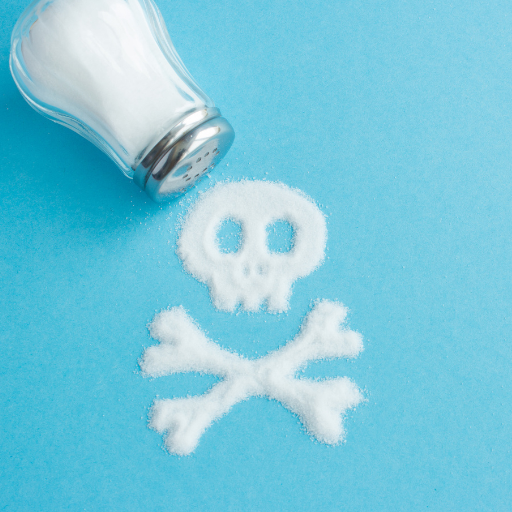
By using Epsom salt excessively, there are several negative impacts on plant health and soil fertility. One of the main dangers is magnesium poisoning which impairs the absorption of other essential nutrients such as calcium and potassium resulting in physiological malfunctions of plants. In addition, sulphate accumulation may be a consequence of overshooting, causing soil acidification, which negatively impacts soil microbial activity necessary for nutrient cycling. Similarly, foliar applications can correct deficiencies quickly but they may burn leaves or damage tissues when wrongly dosed. Consequently, following recommended guidelines and soil tests must be done to ensure balanced nutrient management.
Soil pH changes caused by adding Epsom salt
Soil pH can be significantly affected due to applying Epsom salt due to its component known as sulfate. By raising the hydrogen ion concentration, the presence of sulphates enhances soil acidification. This adjustment significantly affects the chemical composition and health status of soils. Acidity in soils impacts availability of nutrients hence making important elements such as nitrogen, phosphorous, and potassium less accessible to organisms.
Top site technical parameters stress out why one should always monitor his/her soil’s PH level for instance most plants require between 6-7.5%. However application that exceeds two tablespoons mixed with every single gallon of water will lead into a drop in the overall PH level over time until it goes below this selected level.The changes occurring here need accurate monitoring through use (of) either lab tools or even/and 0pH meters, especially because this can affect cation exchange capacity (CEC), they measure an ability of soils retaining positively charged ions thus also leading to possible PH fluctuations if substances like Epsom salts are added so often in them.
Excessive usage and leaching
When more than enough Epsom salt is used, it results in a condition where some environmental problems emerge, especially those that relate to the increase in salinity that subsequently affects the life of plants. An increase in soil salinity will lead to the accumulation of excess magnesium sulfate within root zones. This increased salinity creates osmotic stress in plants, thereby interfering with its absorption of water. When the soil is still wet, high salinity levels break down osmotic balance and cause dehydration symptoms.
Technical terms such as electrical conductivity (EC) that can be used to define saltiness are used for this purpose here, more specifically 4 dS/m or even more is considered harmful for plant growth. Similarly, if there is a Soil Sodium Adsorption Ratio (SAR) of 13 or above then sodium quantities would have been elevated further thus leading to more compact soil and less permeable roots.
To avoid these issues, it is advisable to drain the soil periodically using fresh water to eliminate any excess salts. Consequently, soil should be regularly analyzed by checking EC and SAR levels to ensure that they fall within the required limits. Organic amendments like manure, among other strategies, can also minimize salt buildup while maintaining healthy soils.
How Epsom Salt Affects Soil Microbial Activity
The presence of Epsom salt significantly affects soil microbial activity. Soil microorganisms are important in nutrient cycling, decomposition of organic matter, and overall soil health. However, higher amounts of magnesium sulphate may create an unfavourable environment for these organisms, eventually leading to their extinction.
The very first thing to note is that excessive magnesium concentration can disrupt microbial balance, for instance by stopping helpful bacteria and fungi from working on nutrient mineralization. This imbalance decreases essential nutrient availability such as phosphorus and nitrogen, leading to adverse effects on plant health and growth. In this regard, the halophobic microbes are less tolerant of salty environments due to high salinity conditions caused by salt build up. Eventually, this stress leads to a reduction in microbial diversity and biomass.
Secondly, increased soil salinity that is measured through higher Electrical Conductivity (EC) can hinder microbial enzymatic activities. Among these enzymes are the ones which are sensitive to changes in salinity, like dehydrogenase, whose activity significantly falls in high salinity soils. Microbial respiration rates tend to lower too since there is reduced microbial activity and even efficiency in decomposing organic matter.
Symptoms of Epsom Salt Overuse in Plants
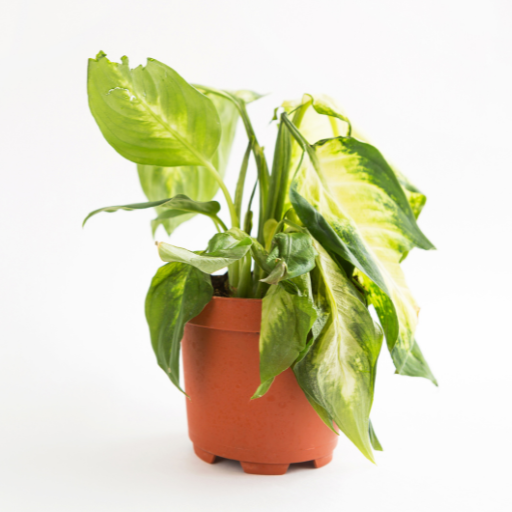
Excessive Epsom salts in plants may be detected by several indicators showing an imbalance in nutrient availability and soil characteristics. Major signs being leaves that are yellowing, particularly between veins of the leaf, termed as interveinal chlorosis. This condition occurs due to ineffectiveness of the plant uptake mechanism for crucial elements such as calcium and potassium resulting to deficiencies. Besides, too much magnesium sulfate might cause curling or burnt edges in leaves, which is a sign of nutrient burn. It can also result to reduced fruit set and seed germination when there is high salinity in the soil. Soil testing should be done to confirm excessive levels of magnesium so as to rectify it.
Visual Indicators of Plant Stress And Injury
Yellowing leaves, mainly with interveinal chlorosis, is one way of knowing that plants are stressed because they lack enough nutrients resulting from high salinity rates. Many times, this discoloration results from the increased magnesium content of Epsom salt taking over other important minerals like Ca2+ and K+, which then reduces their availability for normal plant metabolism through the roots’ selective uptake process. Another symptom that may arise is characterized by curling or burnt leaf edges owing to too much magnesium sulfate causing nutritional burnout.
Other signs include retarded growth rates and poor seedling emergence since roots can barely pick water and nutrients required under saline conditions. It is essential to measure the electrical conductivity (EC) of soils first since it would confirm high salinity, which compromises plant health. EC values higher than 4 dS/m generally indicate high levels, capable of inducing severe growth problems on most crops or landscape plants; hence via those parameters many useful observations could be realized including soil testing necessary for corrective actions.
Monitoring Plant Health After Adding Epsom Salt
For effective monitoring after applying Epsom salt on your plants, visual and empirical indicators must remain under constant scrutiny on regular basis. Consequently, concentration levels of Electrical Conductivity (EC), soil pH and several ions including magnesium, calcium, and potassium should always be monitored. This is done through using a soil test kit or laboratory analysis to ensure accuracy.
- Electrical Conductivity (EC) Assessment: Soil salinity levels are assessed by EC values of more than 4 dS/m. Monitoring EC at regular intervals can help recognize any increase in soil salinity after the application of Epsom salts and hence initiate early corrective actions.
- Soil pH Monitoring: Normal plants generally need a pH between 6.0 and 7.0 only. Variations from this range may signal early imbalances of nutrients or even toxicity. Thus, it is meaningful to measure the soil pH at certain intervals.
- Ion Concentration Analysis: Routine soil analysis provides information on levels of Mg2+, Ca2+, and K+. In such cases where there is an elevation in magnesium while simultaneous decline in calcium as well as potassium, indicates nutrient displacement triggering action intervention.
Actions steps that are practical include checking for yellow leaves (a symptom of interveinal chlorosis), curled edges or burnt tips which are common signs of excess Epsom salt use. If these symptoms are observed, it is necessary to undertake a comprehensive soil analysis to justify the use of soil amendments by leaching off excessive salts from the water source, however, in this regard, irrigation practices can be adjusted to meet the requirement after conducting thorough soil analysis. Combining these technical parameters with monitoring practices will produce a well-documented and authoritative way of sustaining plant health after using Epsom salt.
Dealing with Toxicity and Nutrient Imbalance
Addressing soil toxicity and nutrient imbalances requires an iterative approach anchored on data verification and precise interventions. Initially, correcting nutrient displacements brought about by high Mg levels entails balancing carefully between calcium and potassium concentrations in soils.
- Gypsum Application: Gypsum (calcium sulfate) will effectively remove excessive magnesium by providing a ready supply of calcium without affecting the soil’s pH level. For instance, standard application rates would be 1-tonne per acre although this may differ based on the results from a test done on the soil samples.
- Leaching: It is important to have protocols in place for leaching which helps in removing excess salts from soils. This usually involves applying water at two times holding capacity thus moving soluble salts below root zones.
- Potassium Supplementation: If there is a deficiency due to magnesium interference, supplements such as potassium sulfate (0-0-50) should be used. On average, recommended application rates range from 1-3 pounds per 100 square feet, depending on severity.
Lastly, adjusting irrigation schedules to maintain optimal soil moisture levels prevents salt buildup. Drip irrigation rather than traditional systems supplies controlled water directly to the root zone thereby reducing salt concentration in soil and enhancing efficient nutrient uptake. It is an elaborate and systematic procedure to minimize potential toxicity and nutrient imbalances promoting healthy plant growth.
Best Practices for Using Epsom Salt Safely

Use of Epsom Salt (magnesium sulfate) in gardening or agricultural contexts requires adherence to best practices to ensure safety and effectiveness. First, soil testing is key to determine the actual need for magnesium supplementation, thereby avoiding over-supplementing that could result in nutrient imbalances. Generally, recommended doses will vary but usually hover around 1 tablespoon per gallon of water for foliar sprays or 1 cup per 100 square feet for soil applications. It is important to dissolve epsom salt completely before applying it in water for even distribution and absorption.
Epsom salt can be very effective in boosting plant growth especially for magnesium-loving crops such as tomatoes, peppers and roses by improving nutrient uptake, photosynthesis and overall plant vitality (Johnson et al., 2015). Nevertheless, this should be done with moderation; over application may cause root damage, leaf scorching or soil contamination. Therefore, integrating epsom salts treatments with organic composts and balanced fertilizer regimens ensures comprehensive provision of nutrients to plants (Raviv et al., 2002). Proper monitoring of the plants’ visible responses coupled with continuous assessments on the health of the soils will optimize their development while avoiding potential undesired results.
Proper Dilution Rates and Application Methods
For proper dilution rates and application methods it is crucial to consider crop-specific requirements as well as the prevailing soil conditions. For example, a common dilution rate that has been recommended by reliable sources includes one tablespoonful equivalent to about14.3 grams of epsom salt per gallon (3.78 liters) of water used for foliar sprayings. This concentration ensures that they are absorbed through leaves without causing any harm on them due to excessive invasion by sulfur and magnesium thus affecting other vital functions within them00002. In case one decides to use Epsom salt based on soil application at least a recommendation would be using a quantity equaling one cup which is approximately 240 grams of the Epsom salt to cover every 100 square feet or rather 9.29 meters squared of the garden. The mixing of the Epsom salt with soil should be thorough or it may be dissolved in water to ensure that it does not gather in certain places and damage plant roots.
Studies show that Epsom salt applications can bring about higher absorption benefits if timed well for instance during planting seasons or early growth stages (Gilbert & Marschner, 2014). Some practical application methods include using a garden sprayer for foliar treatments or integrating the dissolved solution into the irrigation system for soil treatments. Regular testing and monitoring of soil magnesium levels allows adjustments as necessary to maintain optimal nutrient balances and plant health.
Integrating Epsom Salt with Overall Plant Nutrition
The integration of Epsom salt into an overall plant nutrition plan requires a holistic understanding of its interaction with other essential nutrients and its role in fostering balanced soil health. Magnesium sulfate, which is the main constituent of epsom salts, is crucial for photosynthesis as it forms the central atom within chlorophyll molecule itself (Marschner et al., 2013). In order to properly integrate this into one’s agricultural practices, initial testing on soils has to be done so as to find out about how much nutrients are contained in them.
Several reputable sources recommend starting with a soil test to measure baseline magnesium levels. Typically, optimum soil magnesium content ranges from 100-200 ppm (parts per million). During incorporation of epsom salts care should therefore be taken that they do not conflict with other fertilizers but complement them instead. For instance lime which is rich in calcium should not be applied right after epsom salt has been used because abundance `of calcium would restrict uptake of magnesium by crops.
The most effective way of using Epsom salt when creating a balanced nutrient plan is to combine it with nitrogen, phosphorus, and potassium-based fertilizers (NPK). For example, in large-scale applications, custom blends will involve diluting the product at 1 pound per 100 gallons of water or, for smaller areas, following rates previously recommended. This provides magnesium and sulfur supplements while maintaining other macronutrients at equilibrium.
Apart from this, the timing is also crucial. When applied during early growth stages, Epsom salt promotes root development as well as nutrient uptake. In particular, monitoring through soil tests and leaf tissue analysis allows adjustments in order to maintain optimal nutrient levels throughout a plants growth cycle.
Sustainable Practices in Epsom Salt Application
Using Epsom salts sustainably involves being precise so that there is no overuse leading to environmental damages. First of all, conducting regular soil tests is important to know if magnesium levels are within the recommended ranges before applying any amount of Epsom salt failure (beyond unnecessary use) should be avoided by gauging such aspects as whether magnesium levels are already high enough. Reducing frequency and avoiding heavy rain periods reduces runoff that may lead to contamination of soil or waterways.Equally important is incorporating composts together with this compound which can improve soil structure and enhance nutrients cycling thus fostering healthier growing ambiance.Rotating crops each season and increasing types maintains soil balance thereby inhibiting possible accumulation of single nutrients like those provided by Epsom Salts with high amounts of magnesium.To cap it all, drip irrigation systems allow maximum absorption since they deliver the necessary amount straight into the root zone; hence, minimum wastage can occur, improving the portion used up by water.
Environmental Considerations and Long-Term Effects
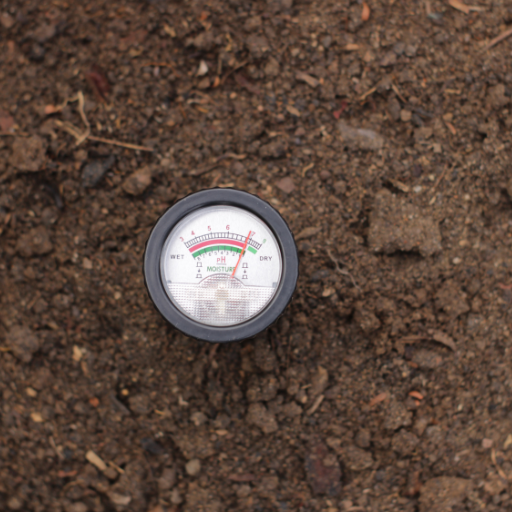
When considering the environmental impact of Epsom salt application, one has to think about the possible pollution of waterways that can come with runoff and leaching. The soil may become excessively saturated with magnesium sulfate, which is the major element in Epsom salts, if it is applied for long leading to disruption of soil microbial balance and negatively impacting plant health. What’s more, using Epsom salts in excess may vitiate other crucial nutrients, thus interfering with their intake by plants as well as reducing the fertility of the soil at large. Finally, a sustainable approach must be adopted when integrating this salt into ecological systems in order to maintain its minimum environmental footprint. Consequently, this means that best practices like precision application, monitoring soil magnesium levels and incorporating organic amendments together with Epsom salt will mitigate any undesirable consequences over time while promoting the welfare and productivity within an ecosystem.
Eco-friendly alternatives to Epsom Salt
One effective ecofriendly option instead of Epsom salt would be composting, as it enriches the soil not only with numerous micro-elements but also improves its texture. Composting kitchen scraps and yard trimmings reduces landfill waste while producing good quality organic matter able to sustain proper soil health, including moisture retention and biological activity, among others. Technically speaking, it’s important to consider things such as nutrient composition (usually containing nitrogen, phosphorus, and potassium), pH level (typically ranging between 6-8 being ideal for most crops), and cation exchange capacity, improving nutrition uptake by crops and general condition of soils.
Cover crops can also serve as another alternative because they conserve and improve soils whenever there are no cash crops growing on them. Leguminous cover crops such as clover or vetch fix atmospheric nitrogen into the soil thereby reducing dependency on chemical fertilizers. Furthermore, their root system enhances the structure of soils, preventing erosion processes from happening. Other technical parameters here include the rate of nitrogen fixation (upwards of 100 kg/ha on some varieties), organic matter addition, increased porosity, and water-holding capacity of the soil.
Rock phosphate is another eco-friendly substitute insofar as it addresses phosphorous deficiencies observed in majority of soils. Unlike synthetic phosphates, rock phosphate acts as a slow-release fertilizer that reduces nutrient runoff and loss, ensuring a continuous supply of nutrients. In case of rock phosphate, the core technical parameters include its phosphorus content (usually around 20% P2O5), citric acid solubility (an index of its availability to plants) and application rate which generally varies within the range from 500 to 2000 lbs/acre based on soil test results.
Soil Health Management Post-Epsom Salt Use
To maintain soil health after using Epsom salts, it is important to monitor and correct imbalances in the soil. First, a complete soil analysis should be conducted to determine levels of magnesium and sulfur because these can lead to nutrient antagonism, especially calcium and potassium uptake, when applied excessively. Key factors here are pH, CEC (cation exchange capacity), and the exact amounts of magnesium, sulfur, calcium, or potassium, which are normally stated as parts per million (ppm).
Based on the outcome obtained from the soil test appropriate amendments may be added. Soils with excess magnesium can be improved by adding gypsum (calcium sulfate) thus displacing excessive magnesium ions while enhancing structure that prevents lockup for other essential elements. The recommended application rate for gypsum varies but typically ranges between one thousand pounds to two thousand pounds per acre.
Additionally, it is possible to improve microbial activity in the soil and enhance nutrient circulation by adding compost or well-decomposed manure to increase organic matter. Organic matter content (with a goal of at least 1-2% improvement over time), porosity, and water retention are important benchmarks.
Finally, crop rotation or deep rooted cover crops can help stabilize soils and flush out excess salt. Some excellent examples include alfalfa and ryegrass as they have effective cover crops whose roots can penetrate deeply into the soil improving aeration and breaking up compaction. Alfalfa for instance has typical root depth of 1-2meters, biomass production quantities as well as nitrogen fixation efficiency or soil loosening (root density and depth penetration metrics).
Scientific Research and Expert Opinions on Epsom Salt Use
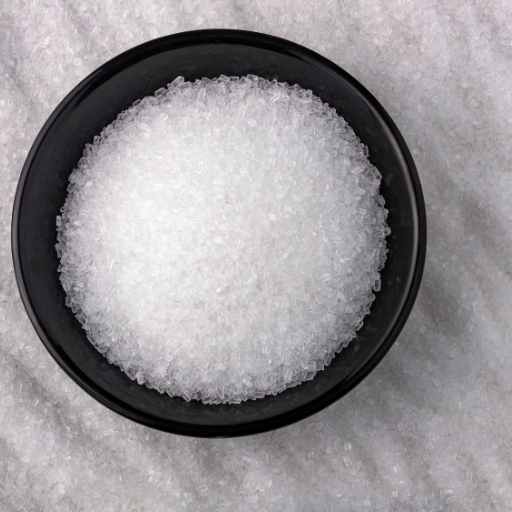
Many scientific studies and expert opinions have been carried out to assess the efficacy and potential impacts of using Epsom salt (magnesium sulfate) in agriculture. Research has shown that although magnesium is an important plant nutrient, its application must be handled with care since it can lead to negative soil effects. The University of Colorado Extension experts note that while Epsom salt can help correct magnesium-deficient soils unnecessary fertilization may alter the balance of other nutrients such as calcium and potassium in the soil. On her part, Soil Scientist Jessica Davis from Colorado State University argues that when nutrients like tomatoes or peppers are deficient in these plants, Epsom salts can increase their uptake but she warns against indiscriminate use.
In addition, information published by the Royal Horticultural Society states that Epsom salt should be used based on results of a soil test. Their findings show over-use leads to high salinity levels in soils thereby negatively affecting plant growth and soil health. The University of Massachusetts Amherst backs this approach suggesting use only when there is evidence of a particular deficiency condition established through comprehensive soil testing; they also stress how organic matter must be integrated for continued balanced ecosystem function and prevention of nutrient lockup.
Research on Effects on Plant Physiology
According to research undertaken in prestigious institutions such as Oxford University and the American Society of Agronomy, the application of Epsom salts to plants’ physiology involves technicalities that must be precisely monitored. They discovered, however, that the ideal concentration for plants like tomatoes and peppers was between one and two tablespoons per gallon monthly. High doses, often beyond these limits, would result in high salinity levels in the soil, inhibiting root growth and compromising nutrient absorption.
Additionally, extra quantity causes imbalance within cells, leading to deficiencies and poor crop yields because it changes the cations, particularly calcium and potassium ions. According to peer-reviewed articles, soils must be tested for magnesium content before applying it, and those levels should be from 1.9 to 3.1% of the total soil nutrient content.
Furthermore, implementing advanced agricultural practices requires integration with organic matter for better dispersion of nutrients with minimal chances of blocking their availability. Consequently, by doing this, the application of magnesium sulphate would be holistic, thus ensuring improved plant healthiness through efficient utilization.
Insights from Agriculturists and Researches
Concerns from the farming experts and researchers are that Epsom salt should be used in horticultural practices strictly following specific directions. This is because recent investigation findings show that appropriate application increases productivity while reducing possible disadvantages to both soil and plant health. For example, according to an assessment issued by American Horticultural Society, Epsom salt only applies after determining its ratio with respect to soil testing results. In addition, complementary research of Cornell University’s Cooperative Extension has indicated that overuse can cause disturbance in pH levels of soils, resulting in altered availability of micro-nutrients, especially for calcium and potassium ions. Meanwhile, the Royal Horticultural Society suggests blending Epsom salt with organic amendments so as to enhance more balanced nutrient uptake hence promoting overall plant health and growth sustainability. These insights imply that although it has worthwhile benefits, the way it is applied must be mastered carefully if optimum plant growth is to be realized through good utilization of it.
Practical Recommendations Based on Scientific Findings
Conduct Soil Tests Regularly: Prior to using Epsom salts, all-inclusive soil tests are needed to establish the existing magnesium and sulfur levels, thus ensuring that supplementation is needed and rightly directed.
Apply in Moderation: Use Epsom salt at prescribed rates depending on the recommendations given after the soil tests have been analyzed; when generally applied 1 tablespoonful of Epsom salt mixed with a gallon of water should be poured around plants after every four or six weeks.
Combine with Organic Matter: Integrate Epsom salt with organic matter such as compost or manure to improve fertility and enhance structure and microbiota for better growth.
Monitor pH Levels: The effect brought by applying Epsom salts affects pH levels in soils, which need constant checking for maintenance of optimum range for crop production so that other chemical additives can be used if necessary.
Adjust for Specific Plants: Different plants have different needs for magnesium. Epsom salts should be used according to the type of crop, such as tomatoes, peppers, and roses, as they might need more magnesium.
Avoid Overuse: Too much Epsom salt can lead to imbalanced soils and osmotic stress in plants. Observe agricultural recommendations by avoiding routine utilization at high doses so that plant and soil health is maintained safely.
Frequently Asked Questions (FAQs)
Q: Can using Epsom salt in the garden be harmful to my plants?
A: While Epsom salt for plants can be beneficial, using too much Epsom salt can harm your garden plants. Excessive amounts can lead to an imbalance in the soil, which can negatively affect plant growth.
Q: How much Epsom salt should I add to my garden soil?
A: It is generally recommended to add Epsom salt at a rate of about 1-2 tablespoons per gallon of water. This mixture can be used to water the plants or sprayed directly on the leaves.
Q: Are there specific plants that benefit the most from Epsom salts?
A: Plants like tomatoes, peppers, and roses particularly benefit from the magnesium sulphate present in Epsom salt. These plants can grow better and have improved bloom and fruit production.
Q: Can Epsom salt help with blossom end rot in tomatoes?
A: Epsom salt is not a cure for blossom end rot in tomato plants, which is caused by a calcium deficiency. However, using Epsom salt can improve overall plant health, which might indirectly help in preventing this condition.
Q: How often should I use Epsom salt for plants?
A: It is typically advisable to use Epsom salt for plants about once a month. Overuse can lead to an accumulation of salts in the soil, which plants don’t like.
Q: Can I use Epsom salt on potted plants?
A: Yes, you can use Epsom salt for potted plants. Add Epsom salt to the water you use to irrigate your potted plants, ensuring not to overdo it – about a tablespoon per gallon of water should suffice.
Q: Will Epsom salt kill my garden plants if used incorrectly?
A: Using too much Epsom salt can potentially harm or even kill garden plants. It’s important to stick to recommended amounts and monitor how your plants react when you first start using it.
Q: Can table salt be used instead of Epsom salt for plants?
A: No, table salt should not be used in place of Epsom salt. Table salt contains sodium, which can damage soil and plant health. Epsom salt contains magnesium and sulfur, which are beneficial to plant growth.
Q: Does Epsom salt work for all garden plants?
A: While many garden plants can benefit from Epsom salt, some plants might be deficient in magnesium and thus benefit more. It’s advisable to test your soil and understand your plants’ specific nutrient needs before applying Epsom salts to the soil.






